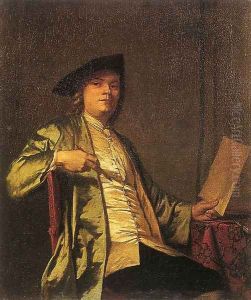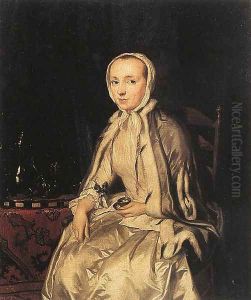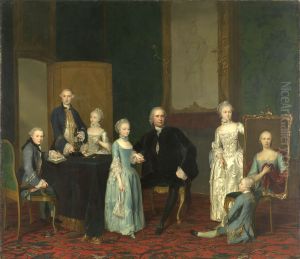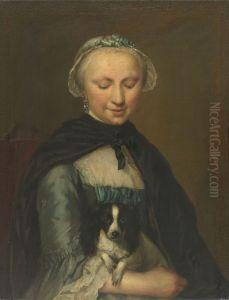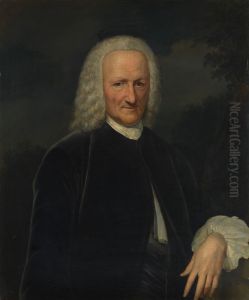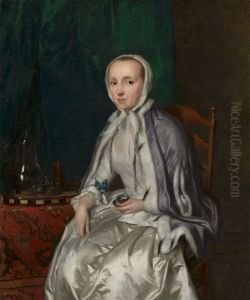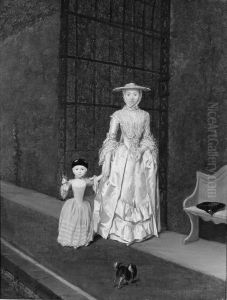George van der Mijn Paintings
George van der Mijn was a Dutch-English painter born in Amsterdam in 1723. He belonged to the van der Mijn family of artists, which included his father Herman van der Mijn and his siblings who were also accomplished painters. George was one of the many artists in the 18th century who migrated from the Low Countries to England, where there was a burgeoning market for portraiture and other forms of art among the aristocracy and the emerging wealthy middle class.
In London, George van der Mijn became known for his portrait work, continuing the family tradition. His style was influenced by the prevailing Rococo tastes of the time, characterized by an elegance, lightness, and emphasis on decorative elements. He was adept at capturing the likeness and the character of his sitters, often painting them in lavish interiors or with pastoral landscapes in the background.
Despite his talent, George van der Mijn did not achieve the same level of fame as some of his contemporaries, such as Thomas Gainsborough or Joshua Reynolds, who dominated the English art scene at the time. However, he did enjoy a degree of success and patronage. His works were appreciated for their fine detail, color, and the subtle textures of fabrics that he depicted in his portraits.
George van der Mijn's career in England was relatively short-lived, as he died prematurely in 1763 at the age of 40. His legacy lived on through his paintings, which continue to be of interest to art historians and collectors interested in 18th-century portraiture. His works are held in various collections and have been featured in exhibitions that explore the artistic exchanges between the Netherlands and Britain during the period.
